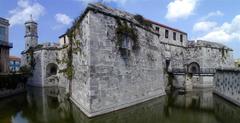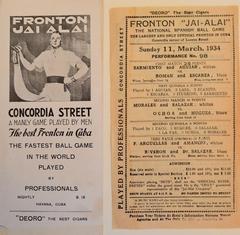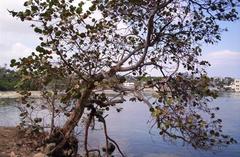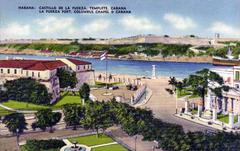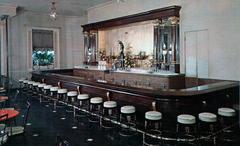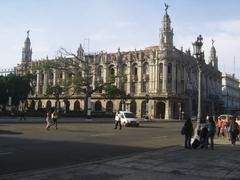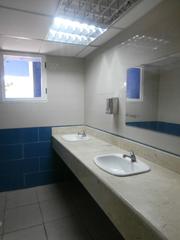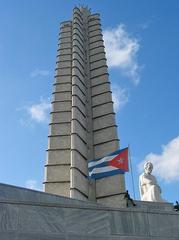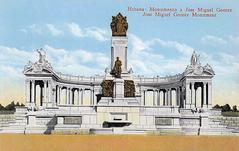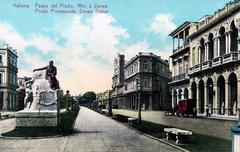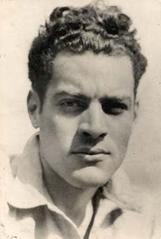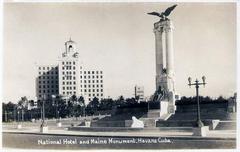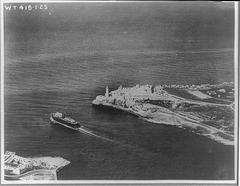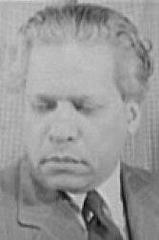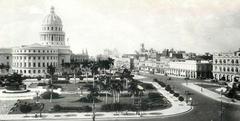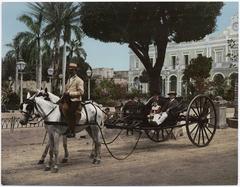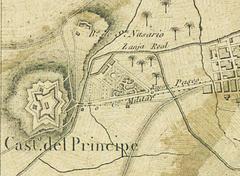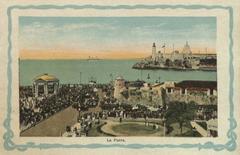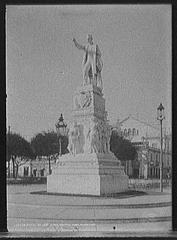
Santiago de las Vegas Visiting Hours, Tickets, and Historical Sites Guide
Date: 14/06/2025
Introduction to Santiago de las Vegas and Its Historical Significance
Located just 19 kilometers south of Havana in Cuba’s Havana Province, Santiago de las Vegas—officially Santiago de Compostela de las Vegas—is a destination steeped in history, culture, and natural beauty. Established in the late 17th century, this town has played a significant role in Cuba’s agricultural, industrial, and cultural development. Its historic sites, such as the neoclassical Iglesia Parroquial de Santiago Apóstol and colonial-era landmarks, tell the story of a community that has thrived through centuries of change.
Notably, Santiago de las Vegas was pivotal in Cuba’s transportation history as the starting point of the Havana–Bejucal railway, inaugurated in 1837—the first Ibero-American railway. The town is also renowned for its vibrant traditions, including the annual San Lázaro pilgrimage and Cuba’s first official Mother’s Day celebration, highlighting the deep-rooted community spirit that continues today.
This comprehensive guide covers everything you need to know: visiting hours, ticketing, travel tips, accessibility, and nearby attractions. Whether you’re a history buff, a festival enthusiast, or a family traveler, Santiago de las Vegas offers an authentic Cuban experience just outside Havana.
For the latest updates and planning resources, consult the Official Havana Tourism Website and EcuRed’s Santiago de las Vegas page.
Table of Contents
- Introduction
- Historical Overview
- Practical Visitor Information
- Guided Tours and Special Events
- Top Photographic Spots
- Nearby Attractions
- Frequently Asked Questions (FAQ)
- Conclusion
Santiago de las Vegas: A Historic Gem Near Havana
Historical Overview
Santiago de las Vegas was founded by tobacco farmers in the late 17th century and grew around a hermitage dedicated to Santiago Apóstol. Over time, it became a hub for tobacco, sugarcane, and cattle ranching. Industrialization in the 19th and 20th centuries brought textile, chemical, and steel factories, while the Havana–Bejucal railway spurred further economic growth. The town is also known for its literary and intellectual heritage, with access to prominent national publications and its own local press.
Practical Visitor Information
Visiting Hours & Tickets
-
Historic Church of Santiago de las Vegas:
- Hours: Monday–Saturday 9:00 AM–5:00 PM, Sunday 8:00 AM–6:00 PM
- Tickets: Free entry
- Accessibility: Wheelchair accessible
-
Santiago de las Vegas Cemetery (built 1814):
- Hours: Daily 8:00 AM–4:00 PM
- Tickets: Free
-
Consistorial House (built 1911):
- Hours: Monday–Friday 10:00 AM–3:00 PM
- Tickets: Guided tour only; advance booking recommended
-
Parque Nacional Zoológico de Boyeros:
- Hours: Daily 9:00 AM–5:00 PM
- Tickets: Approx. 5 CUC (adults), 2 CUC (children)
- Accessibility: Accessible paths and facilities
Most sites are open year-round. Special events like the San Lázaro pilgrimage at El Rincón in December may affect opening hours. Advance bookings are recommended for guided tours and special exhibitions.
Getting There
Santiago de las Vegas is easily accessible:
- By Taxi/Car: A 30-minute drive from central Havana or 5 km from José Martí International Airport
- By Public Transport: Buses connect from Havana and nearby towns; schedules may vary
- By Walking/Bici-taxi: The town center is walkable; bici-taxis and coco-taxis are available for short trips
Accessibility
Many key sites offer accommodations for visitors with mobility challenges, though some historic buildings may have limited accessibility due to their age. Ground-floor rooms in casas particulares (guesthouses) are available; check in advance.
Guided Tours and Special Events
Local operators offer guided walking tours of colonial architecture, historic railways, and community traditions. The annual San Lázaro pilgrimage on December 17 draws thousands, featuring music, processions, and cultural performances. The Mother’s Day celebration in May at the Teatro Popular is another highlight, reflecting the town’s family values and community spirit.
Top Photographic Spots
- Iglesia Parroquial de Santiago Apóstol: Colonial façade and interiors
- Historic Railway Bridge: Over the Almendares River—an engineering landmark
- Central Plaza: Surrounded by historic buildings, frequent site of festivals
- Festive Scenes: During San Lázaro pilgrimage and Mother’s Day celebrations
- Agricultural Fields: Lush landscapes and red ferralitic soils
Nearby Attractions
- José Martí International Airport: Convenient for arrivals and departures; nearby hotels and restaurants
- Boyeros District: Additional cultural sites and markets
- Bejucal: Famous for its music festivals and the historic railway museum (Bejucal Railway History)
- Old Havana: UNESCO World Heritage site with museums, plazas, and the Malecón
Cultural Heritage and Social Life
Santiago de las Vegas is known for its literary and intellectual tradition, having been a hub for both national and local newspapers. Its civic pride is evident in the town’s cleanliness, a legacy from the mid-20th century. The Consistorial House and Casa de la Cultura are centers for art, dance, and community events. Notable health institutions, like the Psychiatric Hospital of Mazorra and the “Los Cocos” sanatorium, reflect the town’s inclusive spirit.
Gastronomy and Markets
- Paladares: Family-run restaurants serving traditional dishes like ropa vieja, arroz congrí, and tostones
- Mercado Agropecuario: Fresh produce, meats, and artisanal crafts
- Street Food: Churros, croquetas, and tropical fruit juices
Essential Visitor Services
- Currency: Cuban Peso (CUP); bring foreign cash for exchange (GloboTreks)
- Internet: ETECSA Wi-Fi hotspots and prepaid cards; mobile data via Cuban SIM (Cubania Travel)
- Safety: Generally safe; exercise standard precautions
- Language: Spanish is official; basic English in some tourist areas
Weather and Best Time to Visit
- Dry Season: November–April (ideal for visits)
- Wet Season: May–October (warmer, occasional showers)
- Festivals: December (San Lázaro pilgrimage), May (Mother’s Day)
Accommodations
- Casa Particulares: Licensed guesthouses, prices from $15–40 USD/night; book in advance (Cuba Junky), Airbnb
- Hotels: Limited in-town; more options near the airport or in central Havana
Frequently Asked Questions (FAQ)
Q: What are the visiting hours for major attractions?
A: Most open from 8:00 or 9:00 AM until late afternoon. See specific sites above.
Q: Are there entrance fees?
A: Most sites are free; the zoo and some tours require tickets.
Q: Is Santiago de las Vegas family-friendly?
A: Yes. Activities at the Casa de la Cultura and parks cater to all ages.
Q: How do I get there from Havana?
A: Taxis, buses, and rental cars are available; about 30 minutes by car.
Q: Are sites accessible for those with disabilities?
A: Many key sites offer accessibility features; inquire in advance.
Q: Where can I find more travel tips?
A: The Official Havana Tourism Website and EcuRed offer the latest information.
Plan Your Visit
Santiago de las Vegas is a captivating destination where Cuba’s history, culture, and hospitality converge. Use this guide to plan your journey, and consider downloading the Audiala app for real-time updates, guided tours, and interactive maps. For more inspiration, explore our related articles on Havana’s historical sites and follow us on social media.
Summary: Key Points for Visiting Santiago de las Vegas
Santiago de las Vegas blends Cuba’s colonial legacy, agricultural traditions, and vibrant community life. From its iconic church and Consistorial House to lively festivals and welcoming guesthouses, the town offers a rich visitor experience. Accessible guided tours, convenient transport from Havana, and a variety of attractions make it an ideal starting point for exploring the greater Havana Province. Use official tourism resources and modern apps to enhance your trip and enjoy an authentic Cuban adventure.


